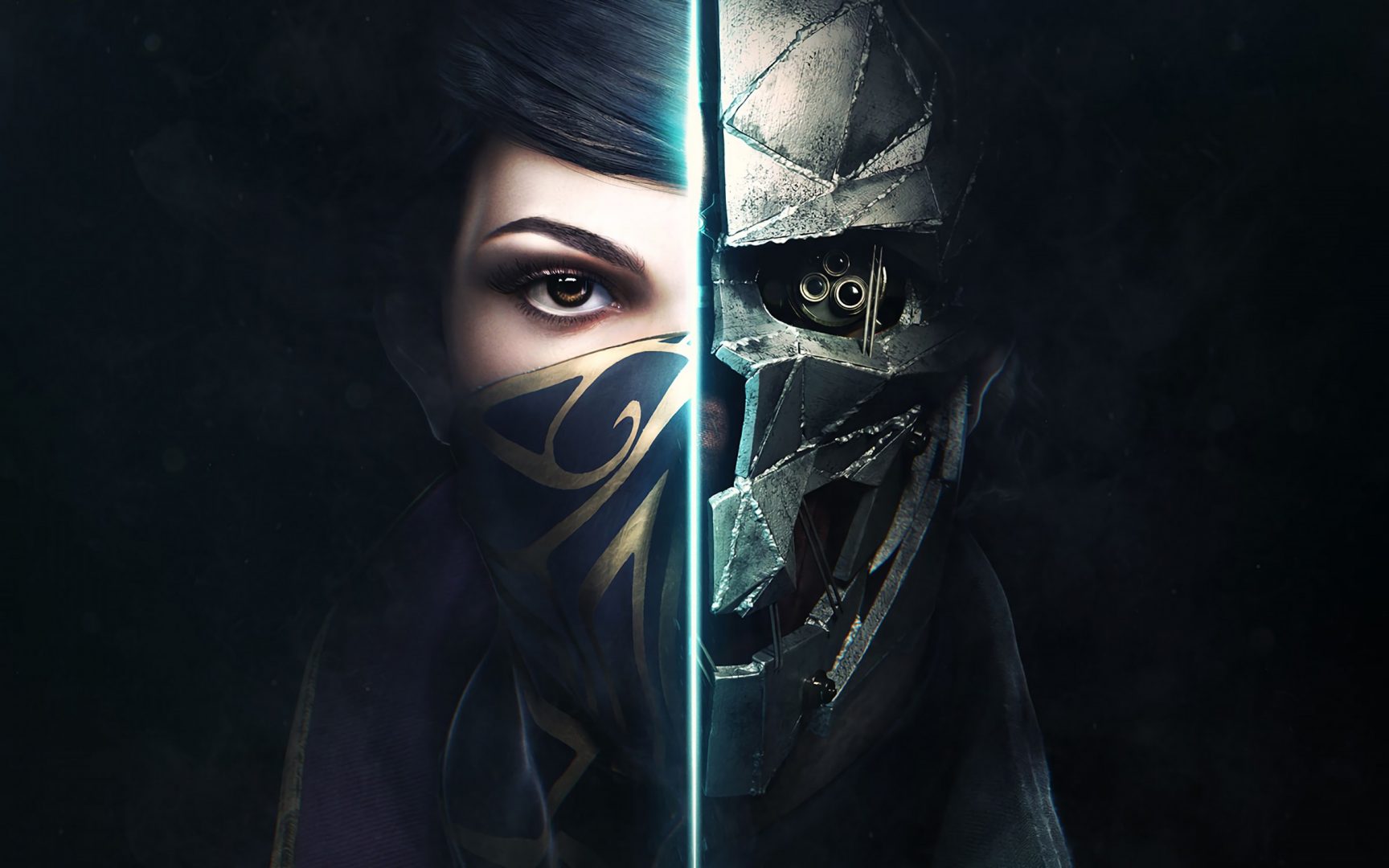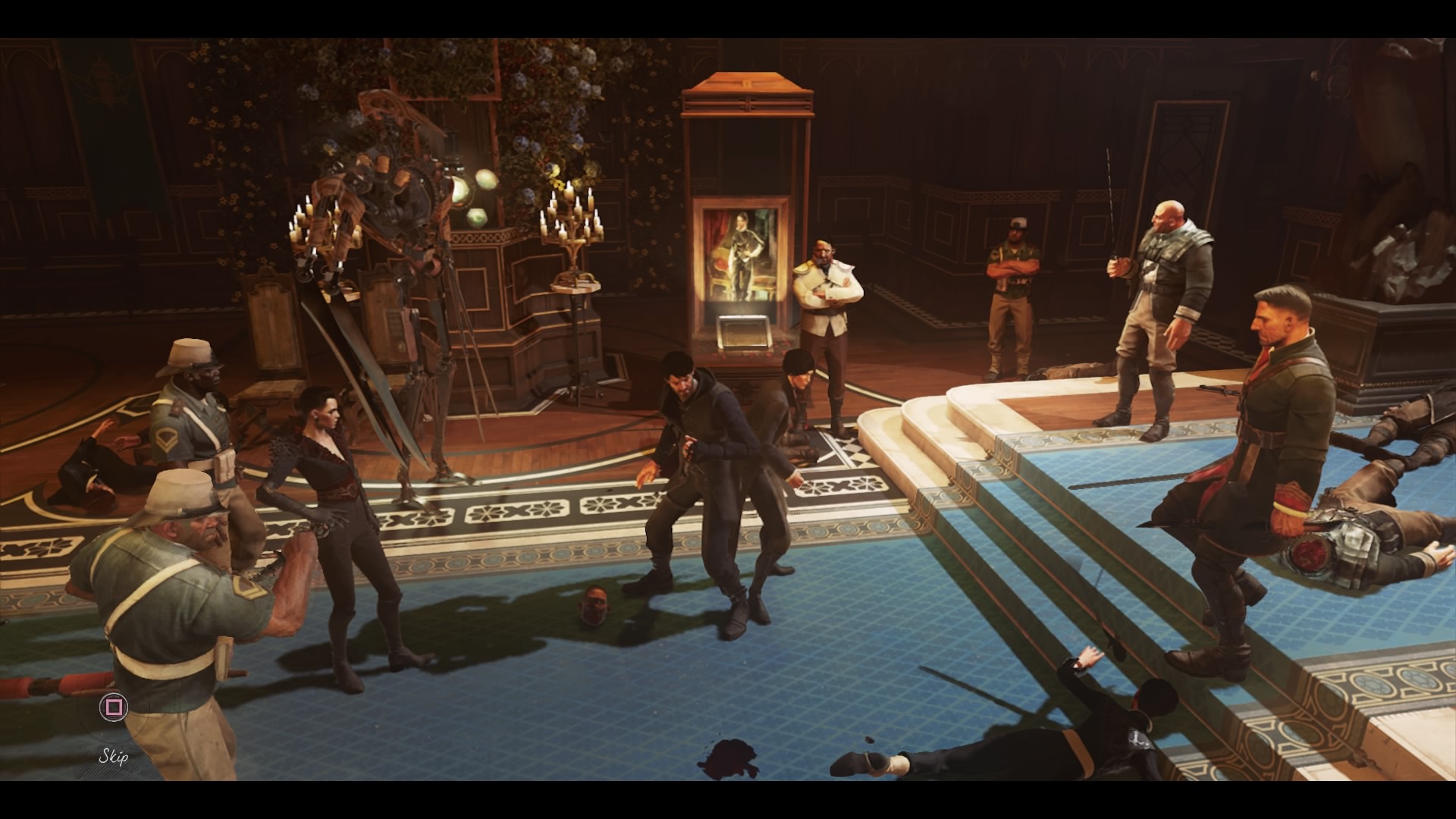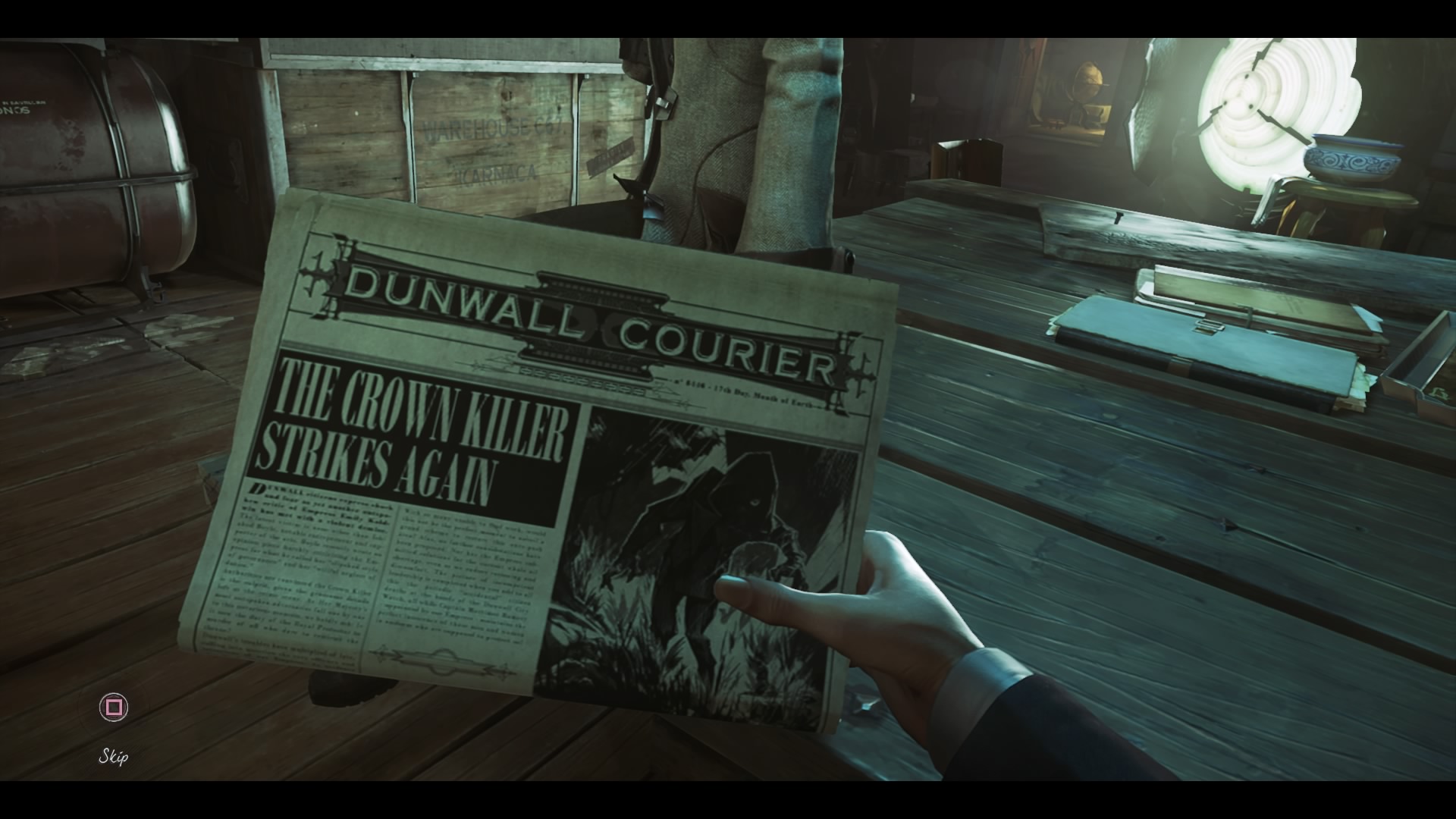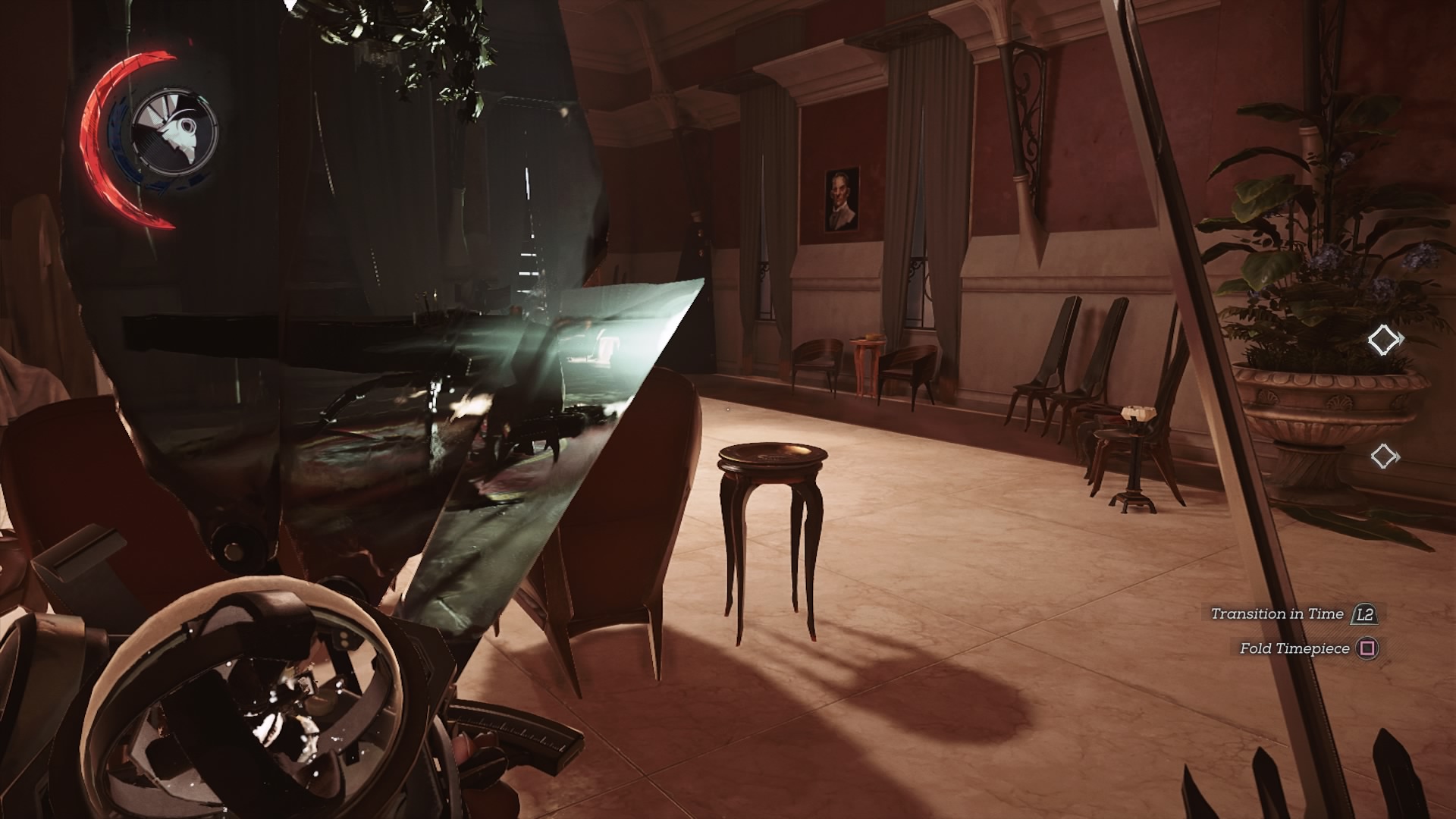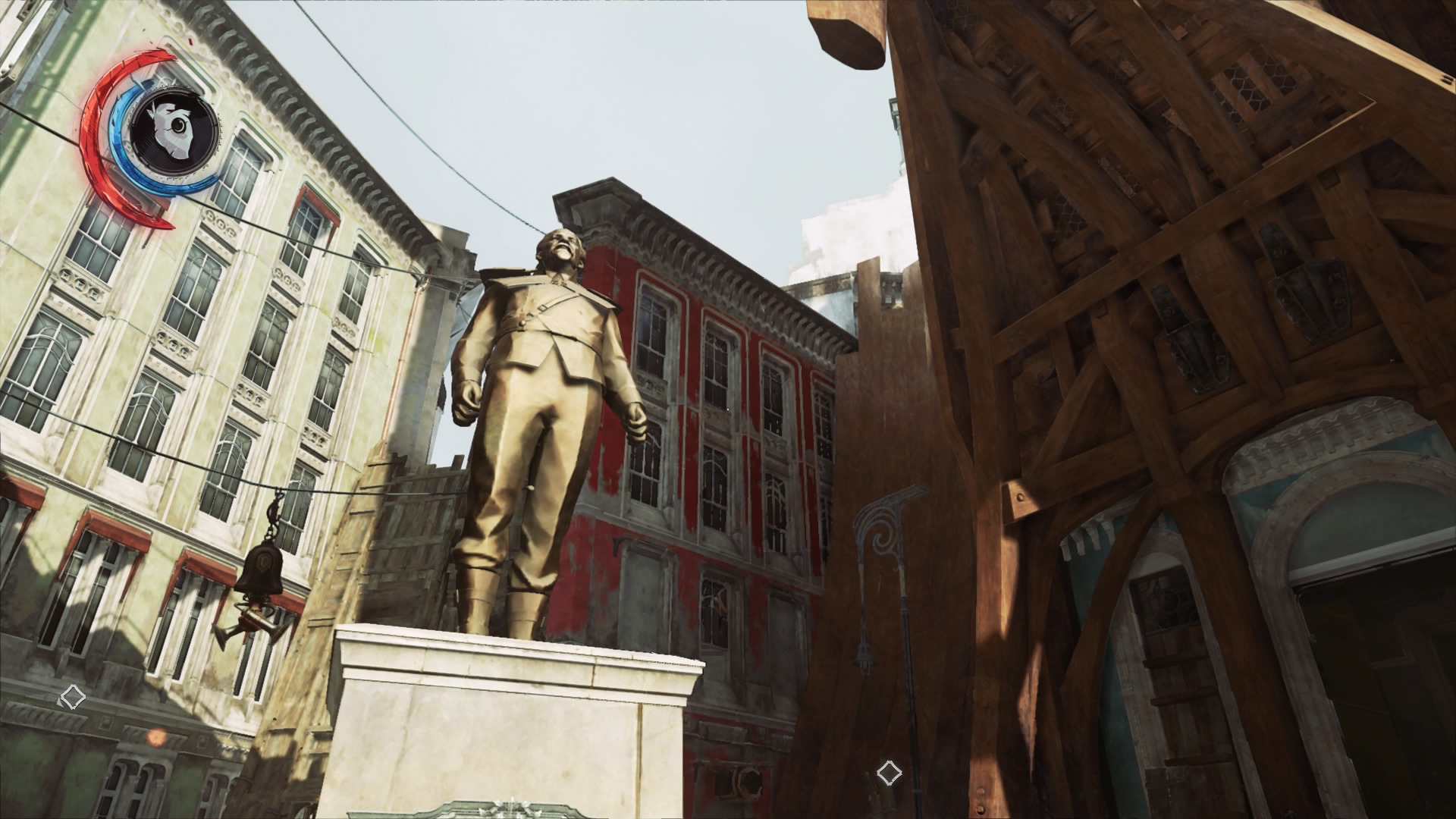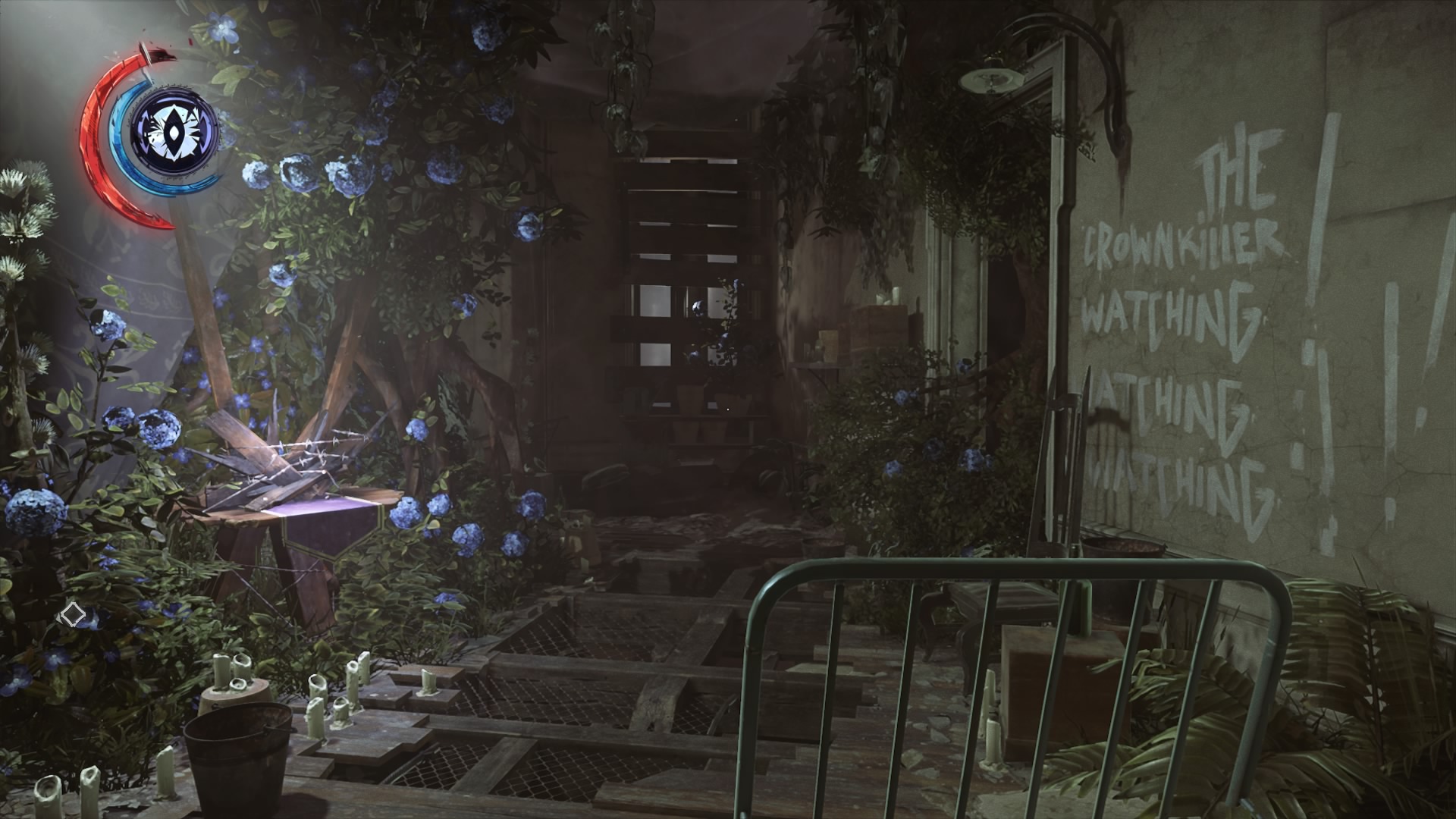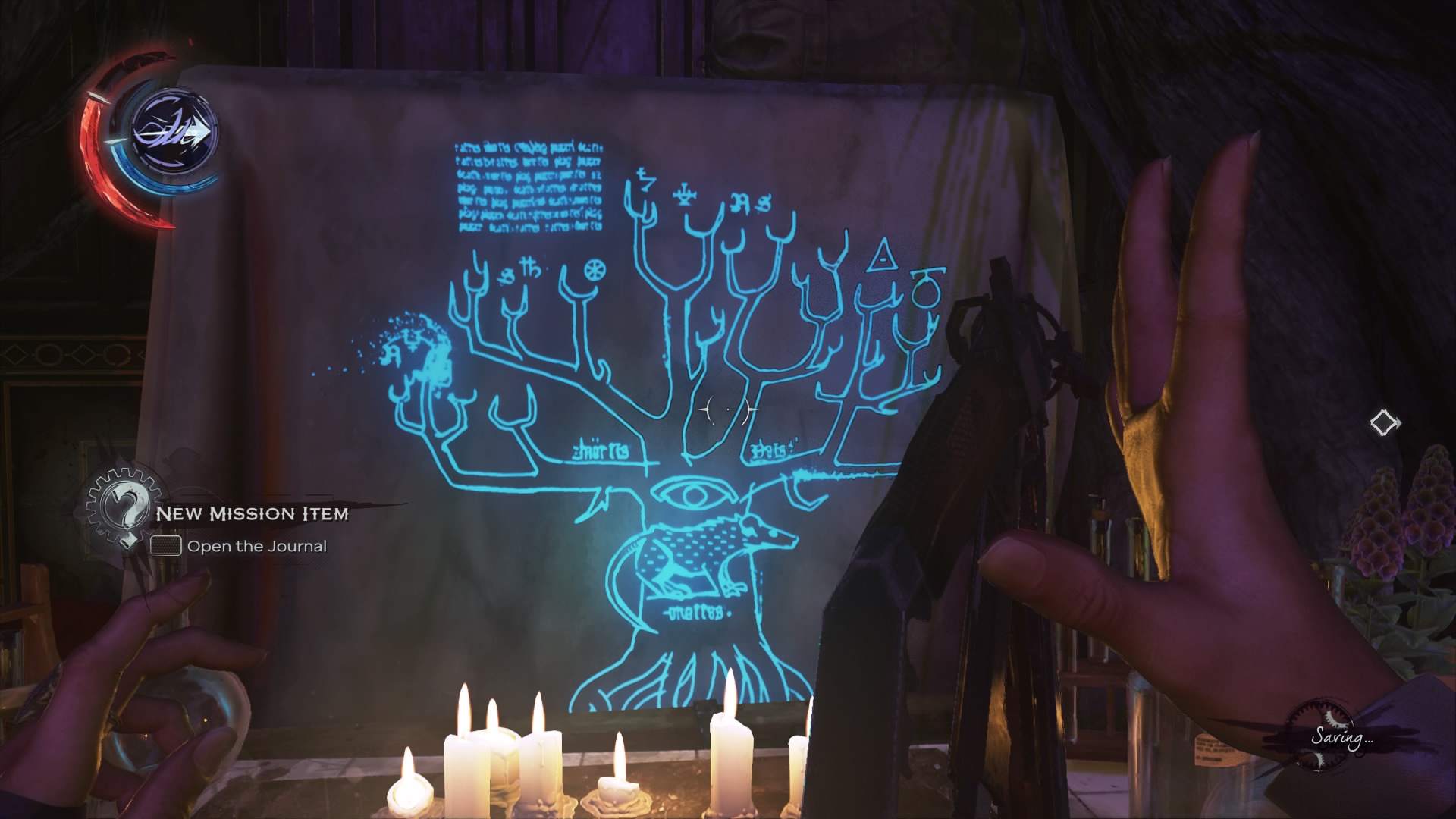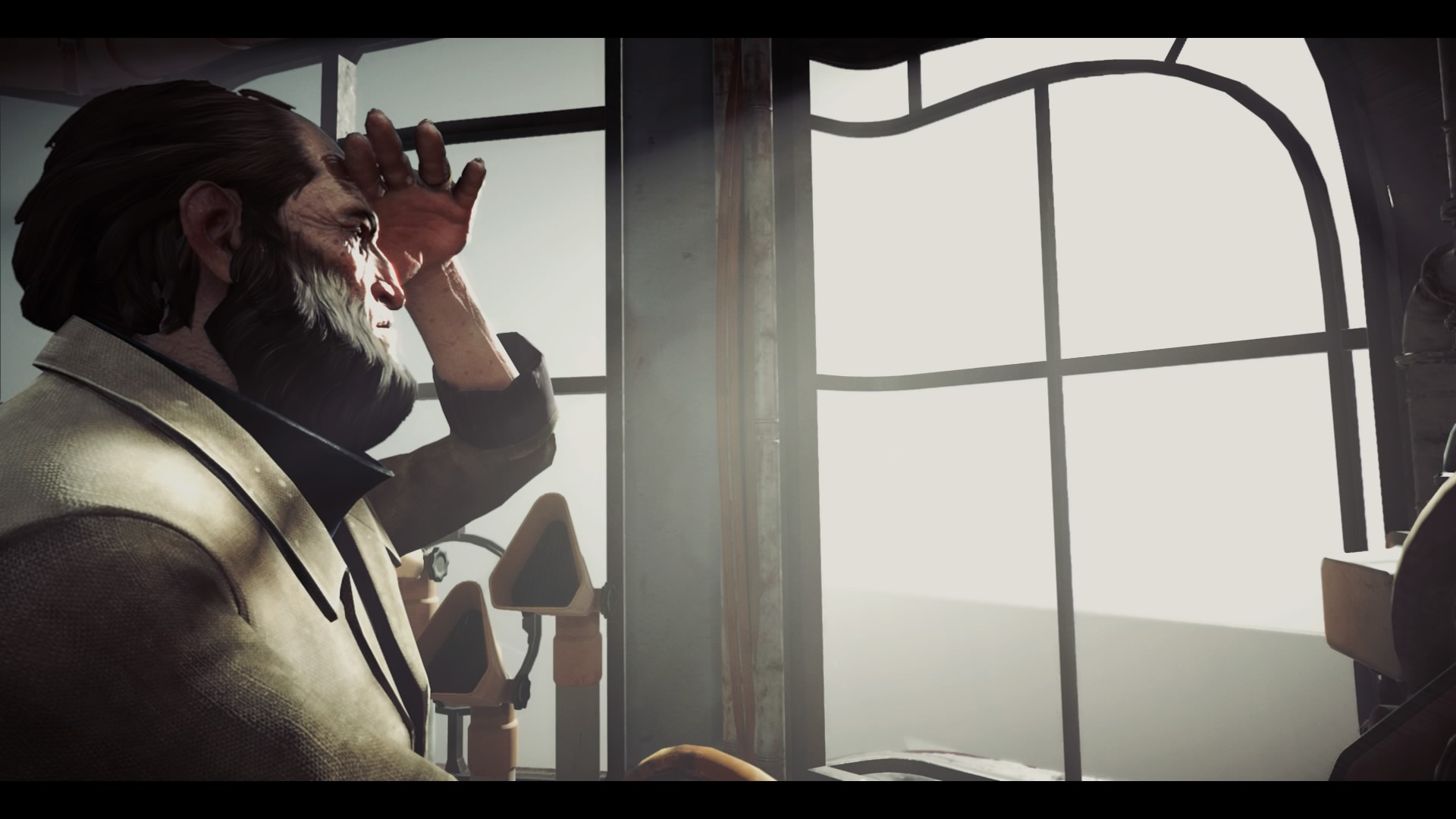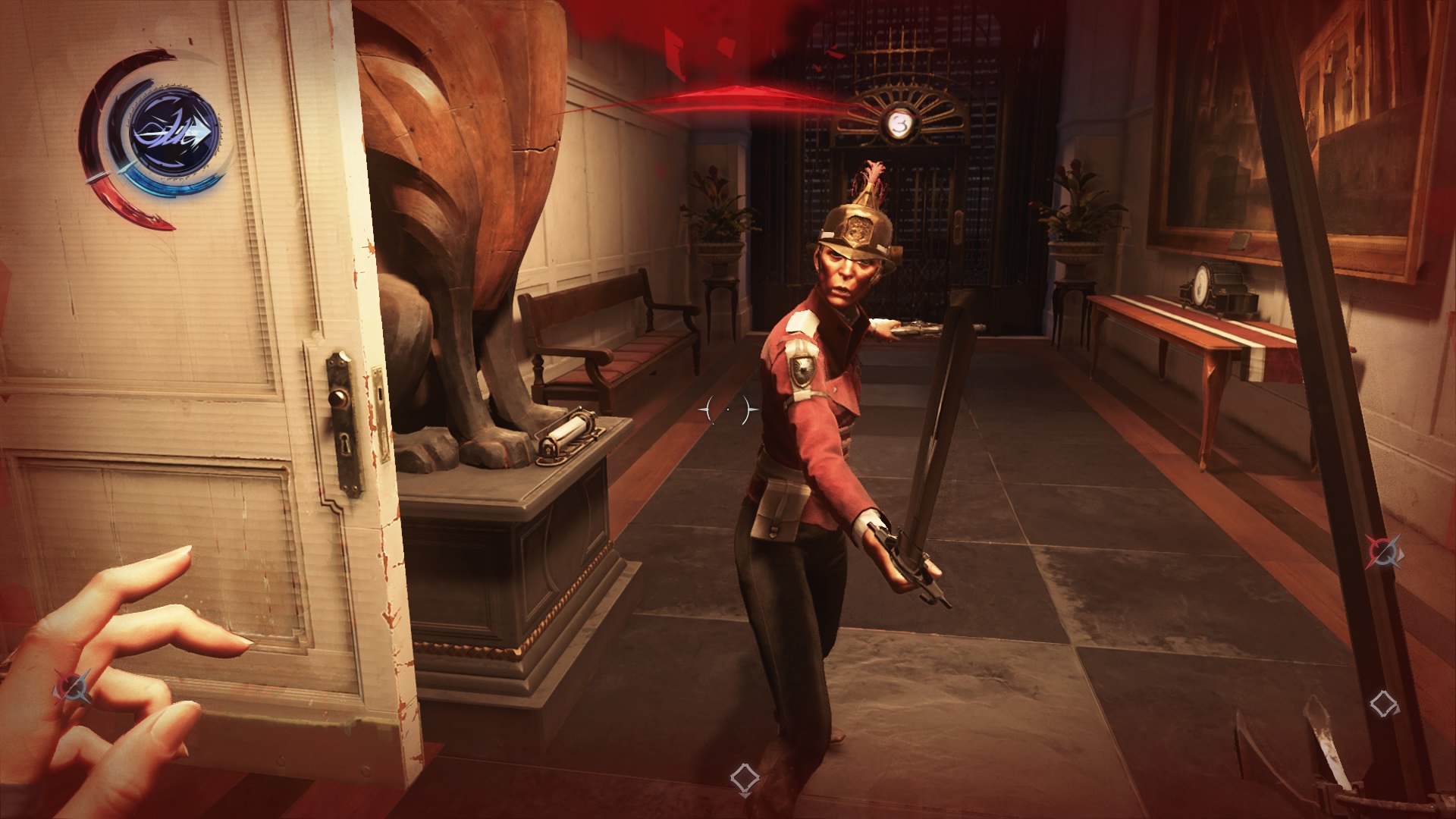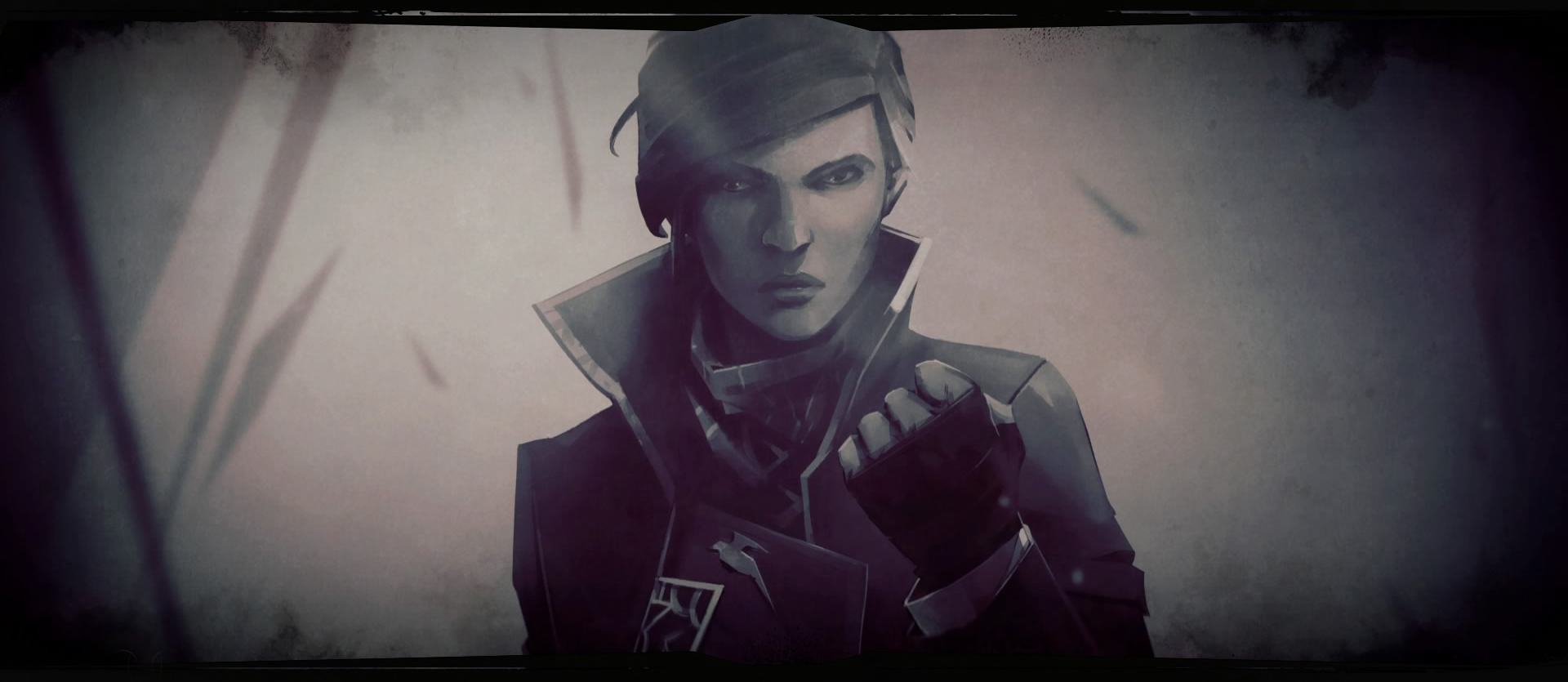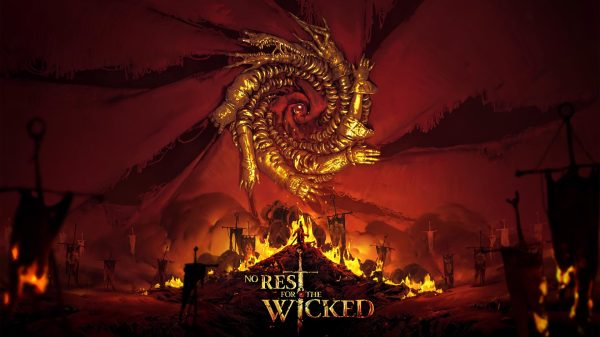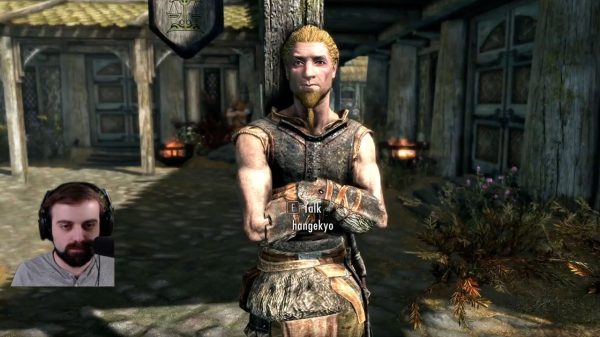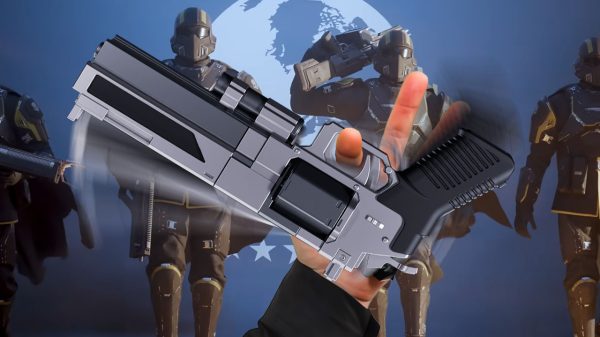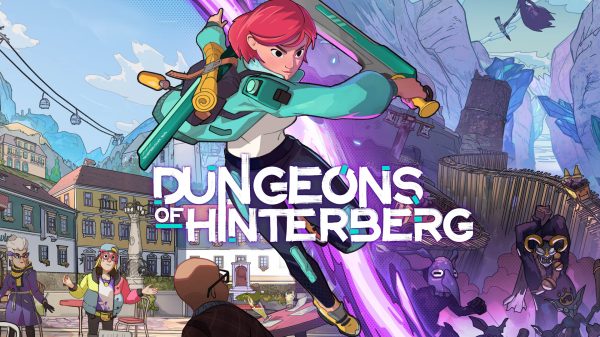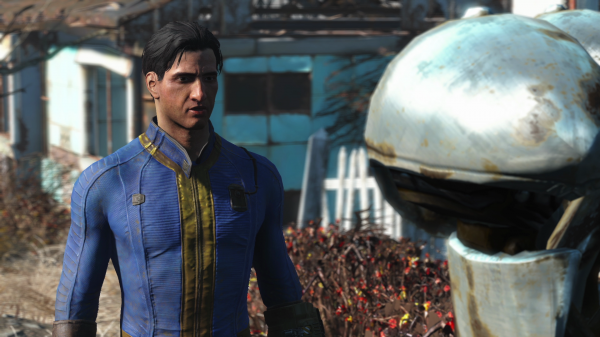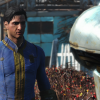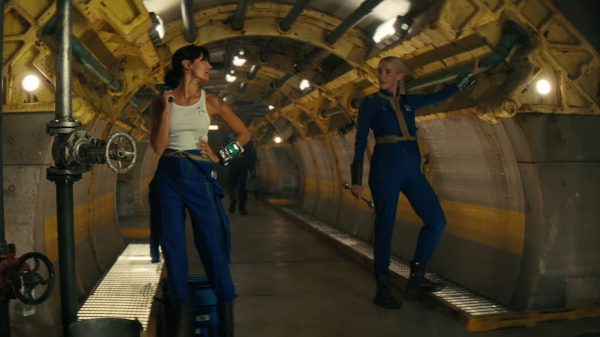If there was one thing that Arkane Studios’ Dishonored did exceptionally well, it was leaving a player hungry for more. And not in a ‘your meal is deliberately small so you order dessert’ kind of way – It was an enriching hunger for the mystic, depressing and altogether treacherous world of Dunwall. My experience with Dishonored 2 embodies what a talented chef might do with this hunger – obviously by giving you what you want – but making sure it is unique enough to satisfy not only a second time, but to be just as memorable.
This is Dishonored 2 in the nuttiest of shells – a familiar array of settings, faces and mechanics, yet still polished and delivered to a brilliant standard. Your return to the steampunkeriffic city of Dunwall is like sinking into a comfortable pair of shoes, right before you take off on an entirely new trail. Immediately the first major player choice is a huge one: choose Corvo Attano, the original game’s protagonist, or take on the role of a major plot device from the first game in the form of the Empress’ daughter Emily, who now rules Dunwall.
Your return to Dunwall is like sinking into a comfortable pair of shoes, right before you take off on an entirely new trail
Environments are dismal, yet interesting. The coastal city of Karnaca has a much brighter tone compared to Dunwall, and exploring its surrounds shows how much craft went into every dingy street and forgotten alleyway. Buildings are detailed and at times awe inspiring, and the game boasts a lot more verticality for a player to really stretch their legs and plot their nasty plots. Compared to the previous game, the mission areas do feel a great deal larger – but it doesn’t come at a cost like one might expect. Every minute detail still feels relevant and the game continues to spotlight the incredible medium of environmental storytelling, rewarding a player for paying attention to the living world that Arkane Studios has crafted.
A particularly incredible set piece, awe-inspiring to behold, could be entirely skipped by the discerning assassin to be. Pulling a lever would reconfigure the entire house around me, like a giant puzzle box that I happened to be inhabiting. Imagine my surprise when I looked away from the puzzle-box configuration lever and instead chose to climb into the rafters and ignore this meticulously crafted experience. What followed then was an entirely unique path through what was effectively the service area of this Clockwork Mansion. Choices like these, compounded by the game’s beginning, instilled a proper want to do multiple playthroughs – something that I usually find lacking with games that boast ‘multiple playthroughs’ as a core functionality.

This is further expanded upon in a detailed way within the game’s mission structure, with branching player choices that are clearly set up and (in the majority of cases) explained. A personal beef I have with many games that offer this kind of gameplay is that it’s presented very much in a ‘GOTCHA’ sense. Allow me to explain… What I mean is that a game won’t actually define your choice, instead it will loudly exclaim about the choice being made AFTER you have taken the action that was one of the options. It may even loudly proclaim that you have now locked yourself out of the other option, that again, you were not aware of before you made the choice. This is very present in games such as Fallout, and has always irked me.
“But Ash!” you exclaim, “It’s not immersive to have everything explained to you!” To you I say, “Shut up Phil, you aren’t my real dad”. Sure, it’s a little intrusive having some big dramatic moment come with the disclaimer of ‘KILLING THIS MAN WILL STOP YOU RECEIVING THE CHICKEN SUIT ON LEVEL 8’, but again that isn’t exactly what I mean. It’s more the case of a game offering you the option to ‘eliminate’ a target, and then prompting that you can do so either lethally or non-lethally. This level of choice was present in the original Dishonored, and plenty of games prior, but to their credit Arkane Studios is more than happy to offer players a suitable twist to their ‘to-do’ list, and have in fact perfected the concept.

Take for example, you are offered a very simplistic mission: Go to place, locate <PERSON>, get information, leave. Simple enough, you can do so via the regular gameplay choices given to the player: guns blazing, or stealthy + lethal/non-lethal. Fair enough. However upon locating <PERSON>, you discovered that a situation may soon arise that will result in bad things happening because of <PERSON>. Technically, you have your information – you are free to go should you wish, and the mission can end there. But now you are presented with more than that choice. Do you kill <PERSON> knowing that you can stop <BAD SITUATION> from happening? Sure, it’s a little more blood on your hands, but you can rest easy knowing that <BAD SITUATION> was averted. But then again, <DUDE> told you that you can stop <BAD SITUATION> by bringing <MACGUFFIN> to <PERSON>.
So now we are looking at a list of options.
- > Go to place, locate <PERSON>, get information, leave.
- > Go to place, locate <PERSON>, get information, kill <PERSON> and stop <BAD SITUATION>, leave.
- > Go to place, locate <PERSON>, get information, follow <DUDE>’s instructions to get <MACGUFFIN>, sort out <PERSON> and stop <BAD SITUATION>, leave.
At some level, it really boils down to how much you care about the given situation, but the amount of power that was put into my hands as a player felt astounding. I actually ended up playing the level three times from a particular save point just to watch the scenario play out in different ways – which is a credit to the designers involved for stopping my frantic run to the end of the story.
Another credit to the game’s design is the self-control exercised by Arkane Studios when working with involved mechanics. Many titles are happy to shoulder the player with ‘feature bloat’, when the mechanics introduced into the game just seem to pile up and bury the player. This can lead to an awkward feeling of choice paralysis, when a player is unsure how to approach a situation due to the sheer number of tools at hand – or worse, there’s a niggling feeling of guilt that you perhaps don’t use a particular mechanic enough. One particular section of the game showcased this control when the player is stripped of their standard powers, and are instead provided with a macguffin that allows them to manipulate time. Now initially my reaction was akin to “Sigh, I am so over time mechanics in games”, until I came to realise just how robust the mechanic was, and embraced the unique perspective it gave me. Then, a moment of worry when I started to factor in how this macguffin might influence the rest of the game – and finally a feeling of relief with a smidge of disappointment when I realised it was intended only for use during that mission, and no further. A decision like this allows the studio to really work hard on fleshing out how such a mission would interact with such an in-depth mechanic, without then ballooning out the rest of the game to take into account such player power.
The penultimate climax of the game is not lacking creativity, but it does end up unfolding precisely as one would expect. Even the overarching story when looked at thinly is nothing we have not seen before, but it is saved by the locations and the characters that serve as brilliant vehicles to a fairly standard plot. The incredible ‘mystic/whale/steampunk’ world is brought to life by powerful performances from the likes of Vincent D’Onofrio and Rosario Dawson, and when you do reach that endpoint the satisfaction you feel is not drawn from the wholly predictable conclusion, but more so from how your actions up to that point have weighed against your own gamer conscience.
Final Thoughts
Dishonored 2 is a faithful ante-up of its predecessor, providing players with a playground of misery and excitement in equal parts. It showcases storytelling that is subtle and enjoyable just to sit back and observe it – right before plunging a dagger in its throat.
Reviewed on PS4

- Arkane Studios
- Bethesda
- PS4 / Xbox One / PC
- November 10, 2016



Known throughout the interwebs simply as M0D3Rn, Ash is bad at video games. An old guard gamer who suffers from being generally opinionated, it comes as no surprise that he is both brutally loyal and yet, fiercely whimsical about all things electronic. On occasion will make a youtube video that actually gets views. Follow him on YouTube @Bad at Video Games





